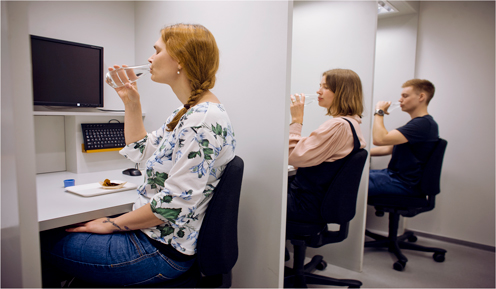Oral perception and texture

Our research is on understanding of consumers (children, adults and elderly) acceptance or rejection of food textures and in the optimisation of textural properties (in combination with appearance and flavour).
Future foods will utilise new raw materials (e.g. legumes, plant-based proteins, insects, etc.) processing (e.g. fermentation) and ingredients aiming to lower environmental and climate impacts. This will lead to foods with novel textural properties and create challenges on how to mimic textures of existing products. Another challenge is in the area of foods for the growing segment of older consumers, who have changing needs in chewing and swallowing of foods.
Texture properties of foods are important drivers for consumer acceptance, rejection and eating behaviour. Sensory texture includes properties of the visual surface, skin haptics, the tactile and mechanical properties from first bite or sip to mastication, swallowing and residual impressions.
We perform research within the areas of:
- Developmental and cultural aspects in texture acceptance learning
-
Individual differences in texture perception and preferences
-
Particle (fibre) perception and swallowability (e.g. dysphagia)
-
Relationships between the oral surface topology and touch/texture perception
-
Modelling texture perception (trained panels) with tribology measurements
Research staff
Associate Professor Michael Bom Frøst

 Wender Bredie
Wender Bredie